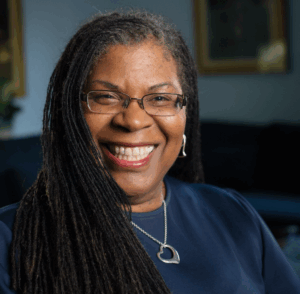 From the Advocate
From the Advocate
November 2023
Art Work is Real Work
Last month, I had the honor of sitting on a panel at the California Economic Summit, speaking with State Senator Anthony Portantino (25th District), Julie Baker, CEO of Californians for the Arts, Kristen Dolan, executive director of the California Desert Arts Council and Yaya Ortiz, co-founder of Culturas Music and Arts.
This panel was the first time the Creative Economy had been talked about from the plenary stage at this high-profile annual event. How strange is that? It’s strange because the creative economy contributes between 7.5 to 23 percent of the state’s annual economic output depending on what you include in that category.
And yet my fellow panelist Kristen Dolan still felt the need to remind the audience that “Art Work is Real Work”. Thankfully, that was a great applause line so the people in the room recognized its truth. But, yes, it’s strange to me that representatives of the arts in California need to come up with that kind of slogan. It’s like the Arts is the Rodney Dangerfield of economic sectors: it just doesn’t get the respect and attention it deserves until Hollywood writers go on strike and everybody panics that their Netflix feed is going to dry up.
I think this is because so many of the jobs generated by the Creative Economy are sole proprietors or micro-businesses, visible more in the aggregate than as individual players. To my office, that makes them even more important as bellwethers of economic and regulatory conditions, huge contributors to our cultural lives and, yes, a significant economic engine.
Do we really need to remind people of that in California? Apparently so.
You can find a wide range of economic estimates on what constitutes the “creative economy”.
The U.S. Bureau of Economic Analysis and the National Assembly of State Arts Agencies estimated that the arts and culture sector contributed $261 billion to California’s economy in 2021, roughly 7.7 percent of total Gross State Product. That same report counted 742,432 jobs and reporting total compensation of $125 billion.
The total economic value of the arts and culture sector ranked #1 amongst all comparison sectors: retail, construction, transportation, utilities, agriculture & forestry, education services and mining.
But the “creative economy” can be defined even larger than that.
I’m going to quote here from the 2022 Otis College Report on the Creative Economy. This report has been published annually since 2007 and includes five sectors: Entertainment and Digital Media, Fine and Performing Arts, Architecture and Related Services, Creative Goods and Products, and Fashion. Instead of GDP, it measures Gross Regional Product (GRP), the sum of value added at every stage of production for all final goods and services – in other words, the final market value — within a region.
With this larger frame, the creative economy was responsible for total GRP of $687.6 billion in 2020, roughly 23% of the state total. Together, those five sectors directly employed almost 1.4 million people and supported a total of 3.9 million workers, outperforming government, manufacturing, health care, and retail trade, according to the Otis College Report. For every 100 jobs in the creative industry sectors, an additional 180 jobs are supported in other sectors of the California economy. And this is in 2020, which, as we know, was a severely down year due to COVID-19, particularly for Fine and Performing Arts.

Source: 2022 OTIS COLLEGE REPORT ON THE CREATIVE ECONOMY
So how come the creative economy is not the focus of more economic and workforce development and policy support? According to the National Assembly of State Arts Agencies, California spends $3.48 per capita on state spending on the arts (including line items) and ranks #11 …behind Florida and Delaware. Ouch. And this is after Governor Newsom has supported significant increases to this part of the budget.
Is it because California has already successfully created so many jobs in these sectors? Or is it a shared prejudice against the “starving artist” archetype?
Or are we simply failing to appreciate, in Kristen’s words, that Art Work is Real Work?
All I can tell you is that I’m proud that my office has been designated as the administrator of a significant new program authored by Senator Portantino that recognizes just that: SB 1116’s Equitable Payroll Fund: Workforce Development and Community Investment for the Performing Arts
This legislation addresses the problem that few small nonprofit performing arts organizations (SNPAOs) have the resources to support hourly wages. The vast majority of SNPAOs in California have adjusted gross revenues below $250,000; ticket revenue usually makes up only half of an SNPAO’s operating budget. What gets cut? Wages, especially during the rehearsal phase of a production.
The Equitable Payroll Fund (EPF) is a grant program designed to support California performing arts workers directly by providing reimbursements of payroll expenses to California SNPAOs with annual operating budgets under $2M. Like the Employee Retention Credit program created as part of the American Rescue Plan, the EPF will help create and sustain jobs for creative workers, one of the hardest hit workforce sectors where recovery still lags far behind others. EPF supporters have estimated that the EPF has the potential to support upwards of 85,000 seasonal, part-time and full-time jobs annually in California.
While SB 1116 was signed by Governor Newsom on September 29, 2022, the SB 104/AB 104 trailer bills for the FY 2023-24 state budget allocated $11.5 million for implementation.
So – thanks to the advocacy of my fellow panelists at California Economic Summit — it’s time now for my office to get to do something we don’t get to do often enough: Real Work on behalf of Art Work.
References:


















































